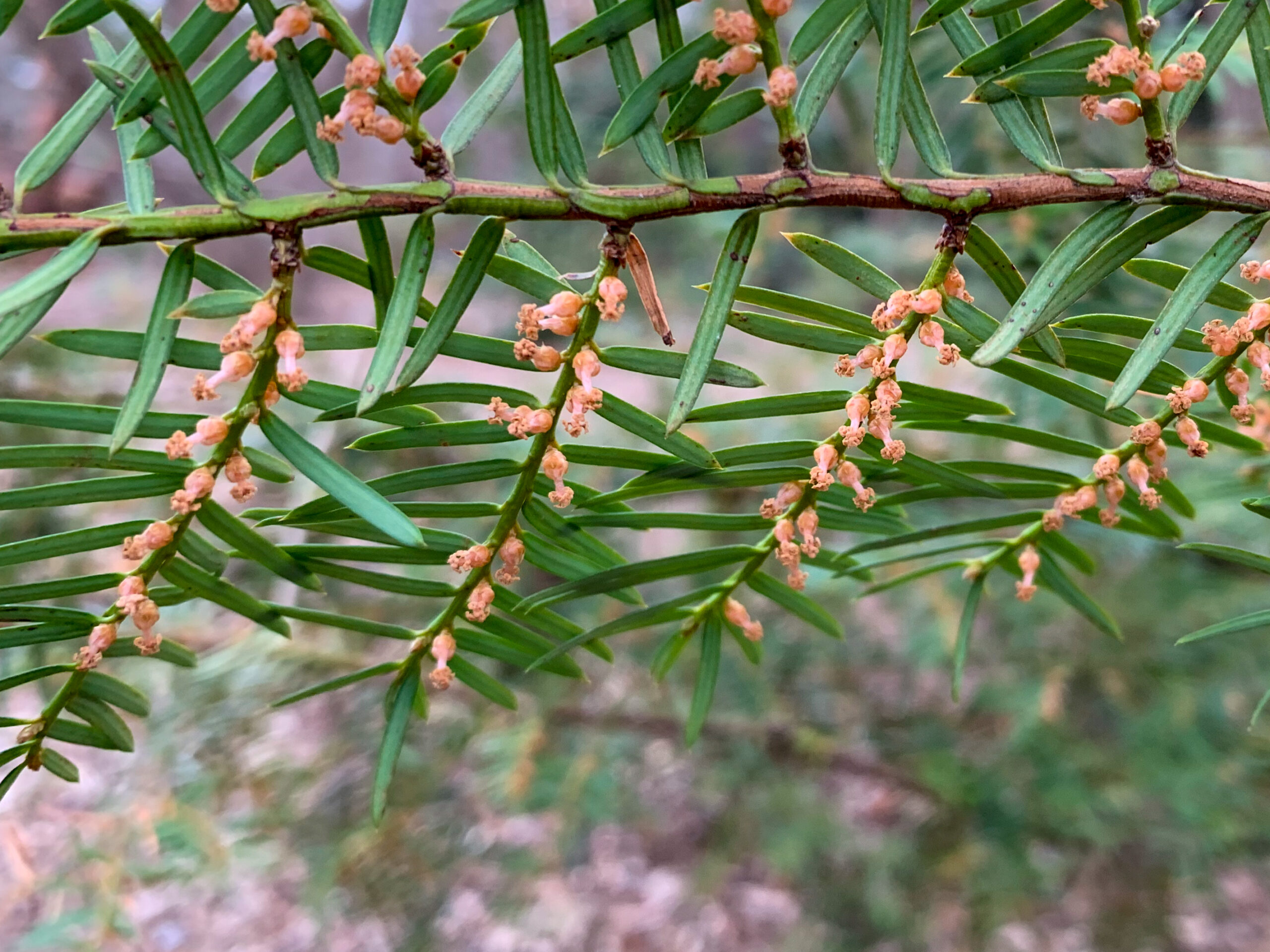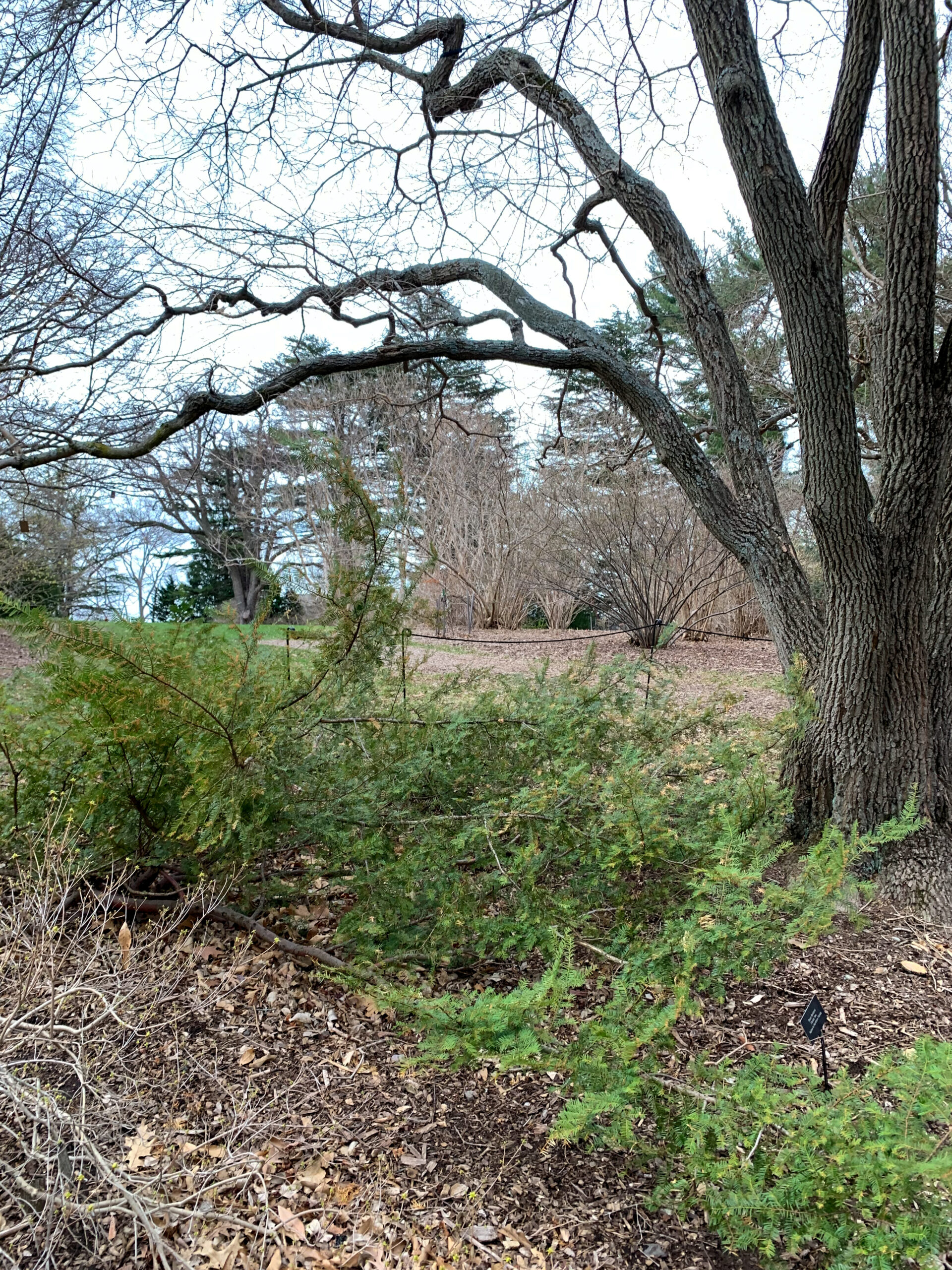Florida Yew
Taxus floridana

- Accession Number
- The alpha-numeric value assigned to a plant when it is added to the living collection as a way of identifying it.
- Accession Date
- The year the plant’s accession number was assigned.
- Common Name
- The non-scientific name for the plant.
- Scientific Name
- The scientific name describes the species of an organism. The first word is the plant's scientific genus and the second is the specific epithet. This two-word binomial is sometimes followed by other taxonomic descriptors, including subspecies (denoted by "ssp."), variety (denoted by "var."), form (denoted by "f." or "forma"), and cultivar (denoted by single quotation marks).
- Plant Family
- The family to which the plant belongs.
- Propagation Material
- The first part (material code) describes the material used to create the plant. The most common codes are "SD" (seed), "EX" (existing plant), "PT" (plant), "CT" (cutting), "SC" (scion), "SG" (seedling), and "GR" (graft). The second part describes the lineage the plant is derived from. The last part describes the year of propagation.
- Collection Data
- The first part indicates provenance (place or source of origin) using a letter code ("W" = wild, "G" = garden, "Z" = indirect wild, "U" = uncertain). The second part lists the plant source. For wild-collected material, the collector, collection number, and country are given.
- Location
- The location of the plant on the landscape.
STATES - NICHOLSON, R., &
SCHWARTZ, M.
1989 S.E. US EXPEDITION
The Florida yew is a critically endangered species. Its native occurrence in Florida’s Panhandle is restricted to an area of about ten square miles.
In 1989, Robert Nicholson, the Arnold Arboretum’s assistant plant propagator, embarked on a plant collecting expedition to Florida. It was the fifth in a series of trips by Nicholson that were known as the Southeastern States Expeditions. All five focused on plants of conservation concern, and in this case, the main target was a conifer known as the Florida torreya (Torreya taxifolia), which, in 1984, became one of the first plant species to receive designation as federally endangered. Nicholson and his collaborator, Mark Schwartz, also collected cuttings of another exceptionally rare conifer that shares the same habitat: the Florida yew.
While the Florida yew is not officially listed on the national endangered species list, the International Union for Conservation of Nature classifies the species as critically endangered. In 2010, the organization estimated the known area of occurrence to be less than ten square miles. The distribution of this species, like the Florida torreya, largely follows the Apalachicola River, which is known for harboring exceptional biodiversity on its so-called stephead ravines. These landscapes are characterized by steep, sandy slopes and spring-fed waterways. Nicholson collected eighteen cuttings on the mid- and lower slopes along a tributary near the town of Bristol. This specimen in the Arboretum landscape is one of them. Cuttings for another specimen, which also grows in the Arboretum today, was collected in a habitat near the town of Sweetwater.
Nicholson’s Southeastern States Expeditions began in 1985. The previous year, the Arboretum had partnered with seventeen other public gardens to establish the Center for Plant Conservation. This network aimed to support ex situ conservation of endangered plant species native to the United States. The Arboretum provided the first headquarters and, also, through work by Nicholson and others, became the first of the partner institutions to build collections to these standards. Among the species that were prioritized in the first year of collection were the pinkshell rhododendron (Rhododendron vaseyi) and the plumleaf rhododendron (R. prunifolium), which are among the twelve species that the Arboretum officially conserves as part of the network today. The Center for Plant Conservation is now based in San Diego and has more than sixty partner institutions.
At the Arnold Arboretum, the Florida yew lies low to the ground. It has a loose form, with branches that sometimes lift as the wind sweeps over Bussey Hill. In Florida, meanwhile, the species often takes the form of a tree, about twenty feet tall. While it may seem unlikely that a species native to ravines in Florida would survive at the Arboretum, this plant and another nearby have survived the Boston winters, even if they haven’t achieved a tree-like form. A third specimen was removed in 2016, not due to frigid temperatures but rather damage from squirrels.
Florida
Viewing this plant in-person? Look for these defining characteristics:
About Our Collection
Fun Facts
Stats
- Living Specimens
- Specimens Dead or Removed
- First Addition
- Most Recent Addition
- Tallest Specimen



Living Specimens
| Plant ID | Accession Date | Received As | Origin | Source |
|---|---|---|---|---|



